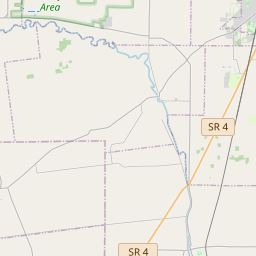The Underground Railroad / The Marion County Trial of Bill Anderson
Historical marker location:






Historic Underground Railroad Site
Late 18th century: The Underground Railroad begins to emerge as a network of secret routes and safe houses used by enslaved African Americans seeking freedom in the northern states or Canada.
1793: The Fugitive Slave Act is passed in the United States, which allows slaveholders to pursue escaped slaves even in free states. This leads to an increase in the number of fugitive slaves seeking refuge through the Underground Railroad.
1810s-1830s: The Underground Railroad grows in prominence and expands its reach. Conductors, individuals who guided fugitive slaves on their journeys, play a vital role in organizing and aiding escape routes.
1831: The publication of "The Liberator," an abolitionist newspaper edited by William Lloyd Garrison, further brings attention to the cause of abolishing slavery and helps to increase support for the Underground Railroad.
1850: The Fugitive Slave Act of 1850 is passed, strengthening the legal rights of slaveholders and intensifying efforts to capture and return escaped slaves. This leads to increased activity on the Underground Railroad as a response.
1852: Harriet Beecher Stowe publishes the novel "Uncle Tom's Cabin," which exposes the cruelty of slavery and becomes a powerful catalyst for anti-slavery sentiment in the North and beyond.
1857: The Dred Scott Supreme Court decision rules that enslaved African Americans are not entitled to freedom, regardless of whether they are living in free or slave states. This further fuels the urgency and importance of the Underground Railroad as a means of escape.
1861-1865: The American Civil War takes place, providing a significant opportunity for enslaved individuals to escape to Union lines or areas where slavery has been abolished.
Late 1860s: The Thirteenth Amendment to the United States Constitution is ratified, formally abolishing slavery and marking the end of the Underground Railroad.
The Underground Railroad was a clandestine network that operated over several decades, and its history is marked by countless acts of bravery and defiance against the institution of slavery. While this timeline provides a glimpse into its development, it is important to recognize the ongoing efforts of countless individuals who risked their lives to help others attain freedom.
The first professional baseball team, the Cincinnati Red Stockings, was formed in Ohio in 1869.
In the early 1800s, Marion County witnessed a rapid influx of pioneers seeking new opportunities. The first permanent European-American settlement, known as "Jacob's Well," was established in 1821 by Eber Baker. The county was officially established in 1824 and named after General Francis Marion, a hero of the American Revolution.
The discovery of rich natural resources, including fertile soil and an abundance of water sources, propelled Marion County's growth. Agriculture became a dominant industry, with crops such as corn, wheat, and soybeans playing a vital role in the local economy. The county also became known for its impressive orchards that produced apples, peaches, and cherries.
Marion County experienced significant industrial development in the late 19th and early 20th centuries. The discovery of natural gas and oil in the region contributed to the growth of industries such as glass manufacturing, furniture production, and the railroad industry. Notably, the Marion Steam Shovel Company, founded in 1884, became a global leader in manufacturing steam shovels and played a crucial role in constructing the Panama Canal.
Over time, Marion County has embraced its history while adapting to modern challenges. Today, it is a vibrant community with a diverse economy, encompassing sectors such as manufacturing, healthcare, education, and retail. The county's historical landmarks, including the Harding Home and the Wyandot Popcorn Museum, draw tourists and locals alike, showcasing the area's rich heritage.
Marion County Timeline
This timeline provides a condensed summary of the historical journey of Marion County, Ohio.
- 1820: Marion County is founded and established as a county in the state of Ohio.
- 1821: The village of Marion is platted and becomes the county seat.
- 1835: The first newspaper, "The Marion Whig," is established in Marion County.
- 1861-1865: Marion County residents serve in the American Civil War.
- 1875: The first railroad track is laid in Marion County, connecting it to nearby cities.
- 1884: Marion County experiences a significant flood, causing widespread damage.
- 1907: The first electric streetcar line is introduced in Marion County.
- 1924: The Harding Home and Memorial are dedicated in honor of President Warren G. Harding, a native of Marion County.
- 1956: The Marion Power Shovel Company, a leading manufacturer of earthmoving equipment, is founded in Marion County.
- 1972: Marion Technical College is established to provide higher education opportunities for the community.
- 2002: The Marion County Historical Society is founded to preserve and promote the local history of Marion County.